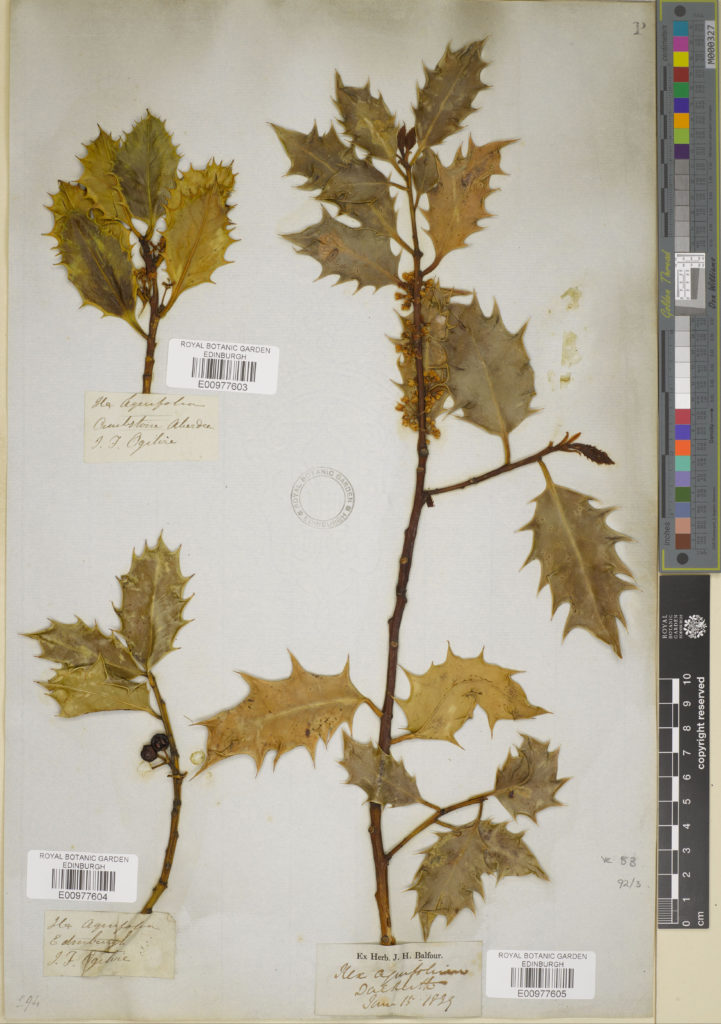The following blog was written by Courtney Kemnitz a digitiser in the Herbarium.
Since 2021 we have increased our digitisation capacity with the goal of getting to 1 million specimens imaged by Autumn 2024. Courtney is working through our British and Irish collections. This series of blogs will spotlight the species that have been completed.
Ilex aquifolium, commonly known as holly or English holly, is a native evergreen shrub or tree found throughout the United Kingdom and Ireland. It has long been a popular symbol of Christmas, and its association with the festive season is deeply rooted in both pagan and Christian traditions.
In pagan times, holly was associated with the winter solstice, a time of renewal and hope. Its evergreen leaves and bright red berries symbolized the enduring power of life, even in the darkest of winters. Holly was also believed to have the power to ward off evil spirits and bring good fortune.
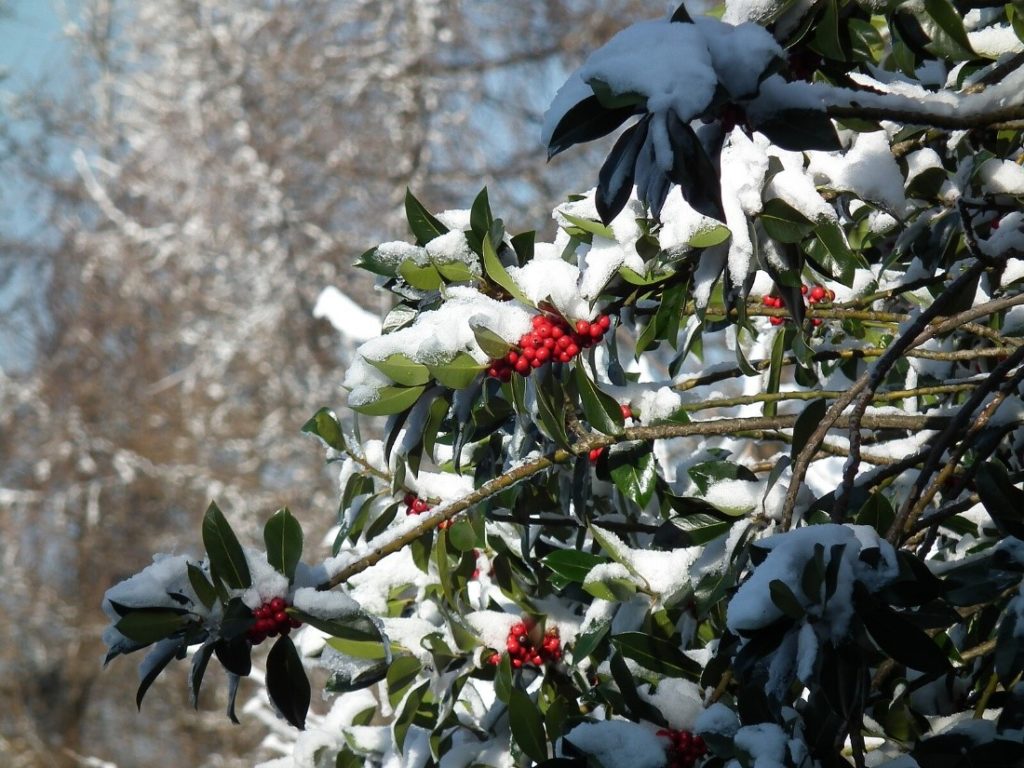
With the rise of Christianity, holly’s symbolism was adapted to the Christian narrative. The spiky leaves were likened to the crown of thorns worn by Jesus Christ, while the red berries represented his blood. Holly wreaths and garlands became a common sight during the festive season, symbolizing both the birth of Christ and the promise of eternal life.
Holly remains a popular Christmas decoration today, and its symbolism of protection and good fortune persists. It is also featured in various winter-themed songs, poems, and stories. The holly leaf has become a recognized emblem of the Christmas season, evoking images of festive cheer and cosy winter gatherings.
A Closer Look
Name: Ilex aquifolium L.
Family: Aquifoliaceae
It was first described scientifically in 1753 by Swedish Carl Linnaeus in Species Plantarum Global Conservation Status: Stable, least concern, but native distribution is obscured by widespread planting (IUCN Red List).
Common Names* in the British Isles and the Isle of Ireland
- English: Holly (hol-ly)
- Scots: hollin (ho-lin)
- Scots Gaelic: cuilfhionn (koo-il-fyun)
- Irish Gaelic: cuileann (koo-il-yan)
- Welsh: ceyln (keh-lin)
- Manx: keeill (kee-ill)
- Cornish: kelen (keh-len)
- Old English: Holmleaf (ho-lm-lee-f)
- Archaic name: holm (ho-lm), occasionally still used
- Anglo-Saxon: holegn (hol-jen), means ‘to prick’
*list not exhaustive
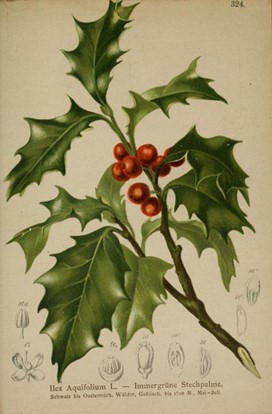
Ilex aquifolium thrives in a variety of habitats, including forests, woodlands, and hedgerows. It particularly favours woodland environments with oak (Quercus sp.) and beech (Fagus sp.) trees as its companions. Holly can reach a towering height of up to 15 metres and can live for an astonishing 300 years.
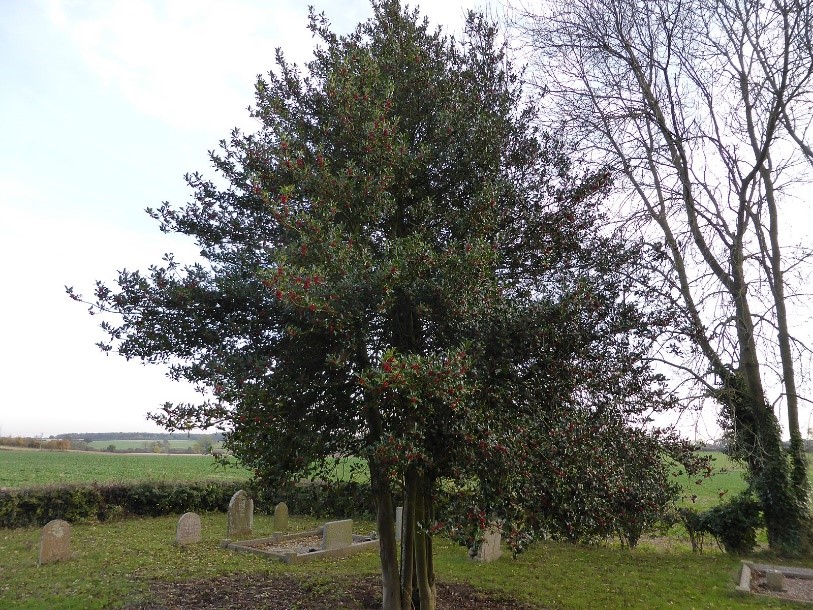
The leaves are typically leathery, with sharp spines on the edges, but some can have smooth round edges. Younger plants have more spiky leaves, while mature trees tend to have smooth edges. Both types of leaves are dark green and glossy, with light green undersides. The stems are woody and grey, with smooth, thin bark. Holly leaves are evergreen, remaining green all year round.
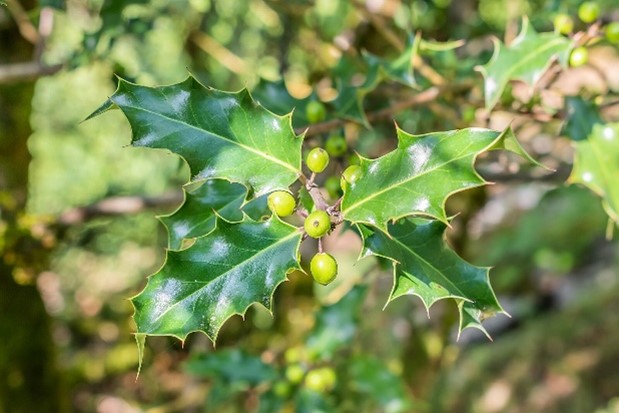
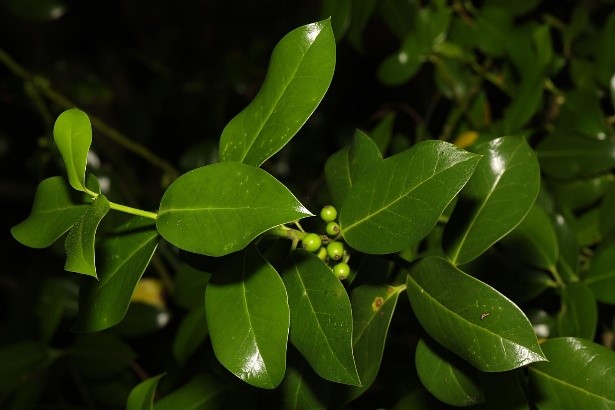
Holly plants are dioecious, meaning that male and female flowers grow on separate trees. These small flowers have four petals. Male flowers have a long stamen and female flowers have a green, oval-shaped centre. The blossoms typically appear between early spring and early summer. Male flowers produce a noticeable fragrance, while female flowers do not.
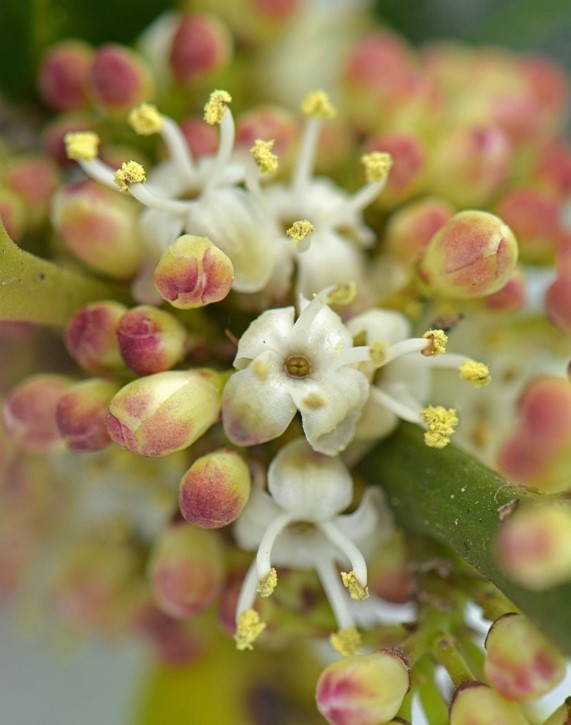
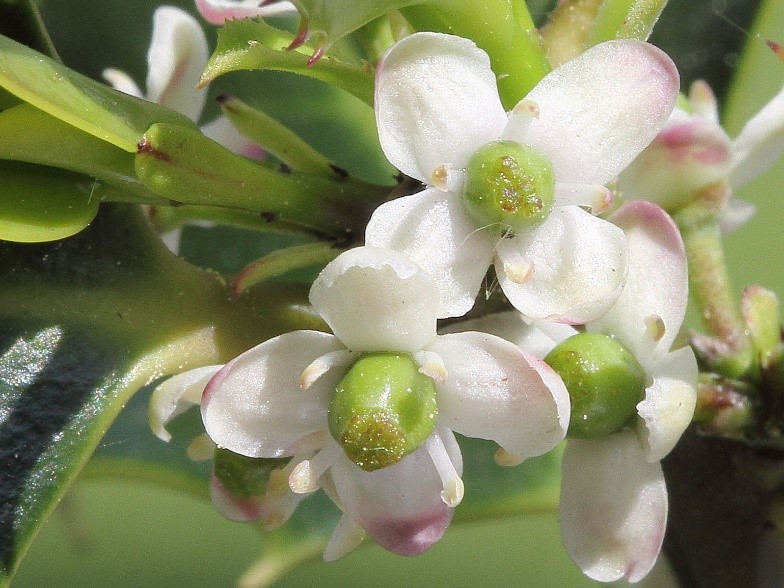
The female flowers mature into small fruits, commonly called “berries” or more accurately, drupes (a fruit with a fleshy part surrounding a hard pit containing the seed). These drupes are typically round, bright red, and glossy, often containing four seeds. They provide a vital food source for many animals during the winter months and can persist on the tree throughout the season. However, holly berries are slightly toxic to humans and should not be consumed.
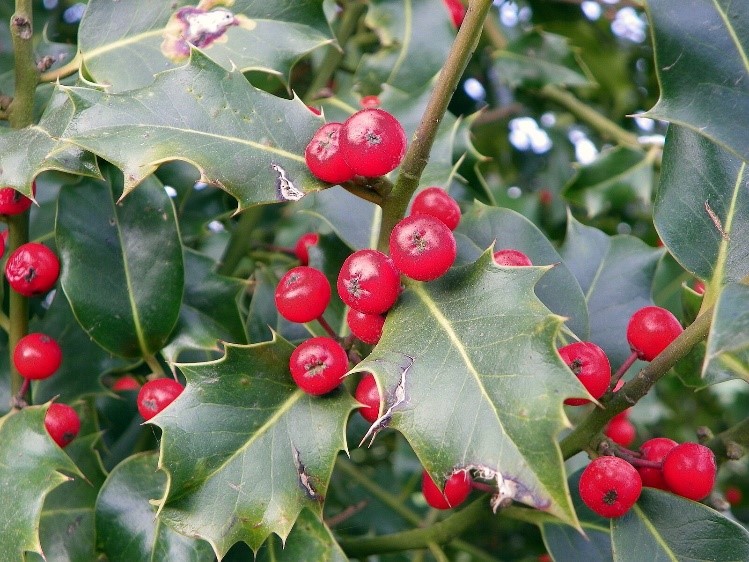
Specimens in the RBGE Herbarium
The digitisation of this species within our British Isles collection is now complete. This allows us to see how our collections are distributed and compare this to the species range data recorded by the Botanical Society of the British Isles (BSBI).
Total number of specimens held in the British Collection within the Herbarium*: 53 specimens
*Please note, that the Herbarium contains more specimens of Ilex aquifolium from other parts of the world. These figures are not included.
Breakdown by Geographical region
| Country | Specimen Count |
| Scotland | 37 |
| England | 15 |
| Wales | 0 |
| Channel Islands | 0 |
| Ireland (Republic of Ireland & Northern Ireland) | 0 |
| United Kingdom and Ireland: Unknown | 1 |
Distribution
Ilex aquifolium is found throughout the British Isles and Ireland as well as Western and Southern Europe, north Africa and west Asia. The pervasive planting of this species in the British Isles and Ireland has made it impossible to discern its original range.
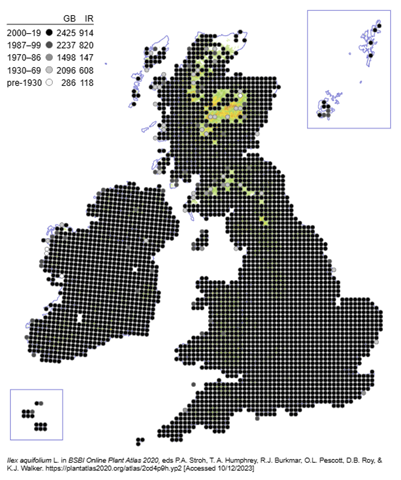
For a map of the worldwide distribution of Ilex aquifolium L. please visit the website: Plants of the World Online.
Uses, Past & Present in the British Isles and the Isle of Ireland
Illex aquifolium is a versatile plant that has been used for a variety of purposes throughout history:
- Decoration, especially popular at Christmas
- Woodworking, used to make items such as furniture, tool handles, and walking sticks. Also used for marquetry and inlay work.
- Firewood
- Medicine
Christmas Carol/Song References
The enduring presence of holly in Christmas traditions is further cemented in the many carols that celebrate its symbolic meaning.
Here are two of the many Christmas carols and songs that reference to Ilex aquifolium
The holly bears a berry,
The Holly & the Ivy (author unknown, 19th century
As red as any blood,
And Mary bore sweet Jesus Christ
For to do us sinners good.
The rising of the sun etc
It’s beginning to look a lot like Christmas
It’s Beginning to Look a Lot Like Christmas (written by Meredith Willson, 1951)
Toys in every store
But the prettiest sight to see is the holly that will be
On your own front door
Literary References from the Britain and Ireland
Ilex aquifolium has been used to explore a variety of themes in literature. Its association with Christmas, nature, and protection has made it a popular and powerful choice for storytelling throughout the ages, and it continues to be a popular motif in British and Irish literature today.
Below are excerpts with literary references to holly in these regions:
Heigh ho! sing heigh ho! unto the green holly:
Excerpt from ‘As You Like It’ (Act II, Scene VII) by William Shakespeare (17th century)
Most friendship is feigning, most loving mere folly:
Then, heigh ho, the holly!
This life is most jolly.
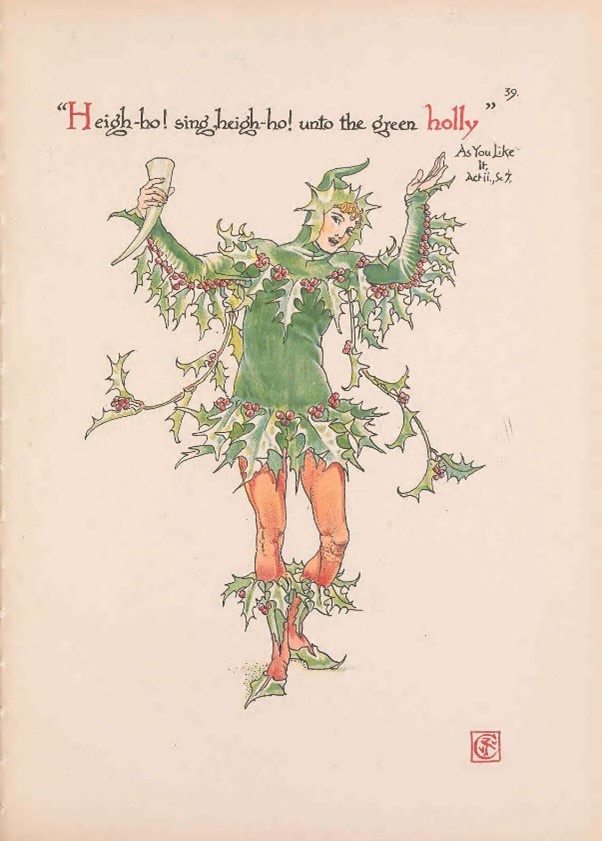
For any tree or birch in the world,
Excerpt from The Nightingale by Dafydd ap Gwilym (14 century) Translation by Richard Morgan Loomis (1982)
While God lets the holly be;
Man shall not burn it and shall not
I am the Ghost of Christmas Present,’ said the Spirit. ‘Look upon me!’ Scrooge reverently did so. It was clothed in one simple deep green robe, or mantle, bordered with white fur…and on its head it wore no other covering than a holly wreath set here and there with shining icicles.
Excerpt from ‘A Christmas Carol’ (Stave Three: The Second of the Three Sprits) by Charles Dickens (1843)
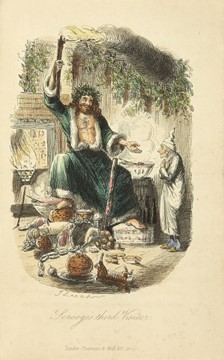
Holly, burn it green; holly, burn it dry;
Excerpt from ‘Aidedh Ferghusa meic Léide’ (The Death of Fergus) (medieval poem). Translated by Standish O’Grady (1892)
Of all trees whatsoever the critically best is holly.


